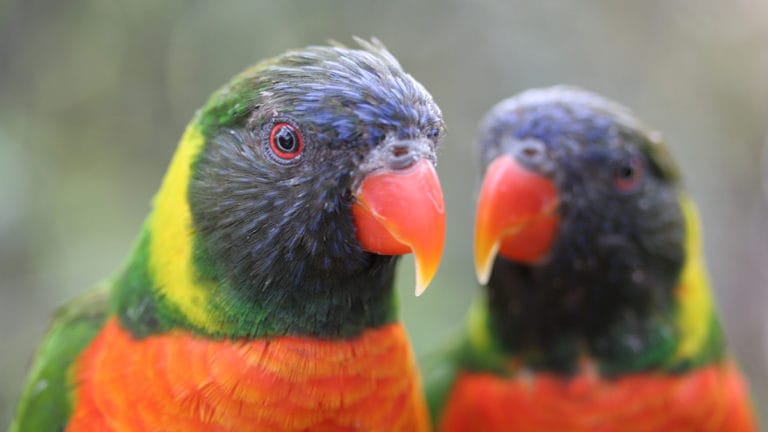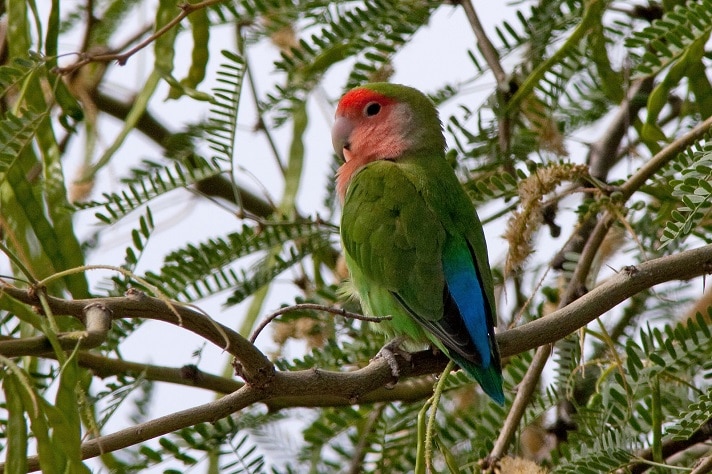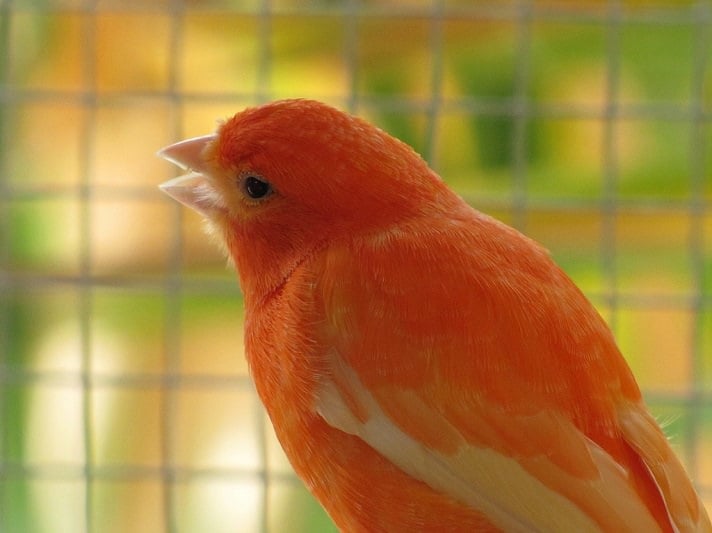In the urban Phoenix, Arizona, residential areas, the wild flocks of peach-faced lovebirds are bold enough to turn even a non-parrot enthusiast into an enthralled bird watcher.
Whether spotted splashing in a backyard garden fountain or snacking on a back-porch bird feeder, these birds are now common fixtures in the Phoenix wildlife scene, and it looks as though they will continue to thrive.
Though peach-faced lovebirds are not native to the United States, these parrots are now estimated to number in the hundreds in the greater Phoenix area — enough to give the neighborhood residents regular glimpses of the colorful bird.
The origins of these naturalized peach-faced lovebirds are believed to be at area aviaries that kept large flocks of birds years ago, said Greg Clark, burrowing owl coordinator for the nonprofit group Wild at Heart and creator of a peach-faced lovebird spotting website. One of the aviary owners decided to turn the birds loose, creating a large initial release site, Clark said.
These peach-faced lovebirds bred well in captivity and also reproduced successfully in the wild, lending to their quick population growth in the Phoenix area, said Troy Corman, avian monitoring coordinator for the non-game branch of the AZ Bird Conservation Initiative at the Arizona Game and Fish Department.
“All it takes is one aviary with 15, 20 birds in it,” Corman said. “If a door flies open and you get a whole flock out, that’s all it takes to get a population going in an area.”
But while initial growth of peach-faced lovebirds can be credited to rapid breeding, it’s the suitability of the bird to the warm and dry climate of Phoenix that keeps the population flourishing. Clark said in spite of past similar accidental releases of flocks of parakeets and cockatiels in the area, it’s only the peach-faced lovebird that continues to thrive.
“I think they just fit here,” Clark said.
Unlike the wild flocks of parakeets and other parrots that survive in the Mediterranean climate of California and the humid subtropical climates of Texas and Florida, the lovebirds in Arizona dwell in a dry climate that’s similar to southern Africa, where the bird occurs naturally. Exotic plants are also planted throughout the Phoenix area, where many of the peace-faced lovebirds make their home.
“We haven’t heard of any other cities where lovebirds are established like they are here,” Corman said. “Peach-faced lovebirds haven’t come up in any of these other places’ radar.”
A lack of natural predators in the area also helps harbor these parrots. The peach-faced lovebirds’ flocking behavior appears to be adequate for keeping predatory birds like owls, hawks and falcons from preying upon the parrots, Clark said.
With Clark’s website, Phoenix urban dwellers can notify when and where they spotted a lovebird, allowing him and the Arizona Game and Fish Department to better gain an idea of population numbers. The site, which began in 1998 as a means of finding out whether or not the lovebirds were breeding, relies on the public to report any peach-faced lovebird sightings, and the method has worked “amazingly well,” Clark said.
“Within six months, we knew that the birds weren’t only breeding but breeding all over the place,” he said. “We also just wanted to address conservation issues, issues associated with non-native species.”
Fortunately, it seems as though displacement of native species is not an issue with the peach-faced lovebirds. While reports have emerged of some lovebirds displacing woodpeckers from their nest cavities, Clark said the rate of cavity-creation with species like the gila woodpecker is so frequent that it is of really no significant concern.
Corman agrees. “Exotic species are much more of an issue than these little peach-faced birds are,” he said.
Dwelling in roof tiles and palm trees, the peach-faced lovebirds sustain themselves with feed from neighborhood bird feeders, fruit from backyard trees and pods from some naturally occurring trees. The birds also flock to backyard fountains and sprinkler systems to drink and bathe, providing a reliable water source for their flock and entertainment for home owners throughout residential Phoenix.
With their brilliant colors, large flock flights and noisy call tendencies, the wild peach-faced lovebirds are an eye-catching addition to the neighborhood.
“They catch the attention of people who aren’t even bird people,” Corman said.
Posted by: Chewy Editorial
Featured Image: D. Patrick Lewis/Flickr
Share:









